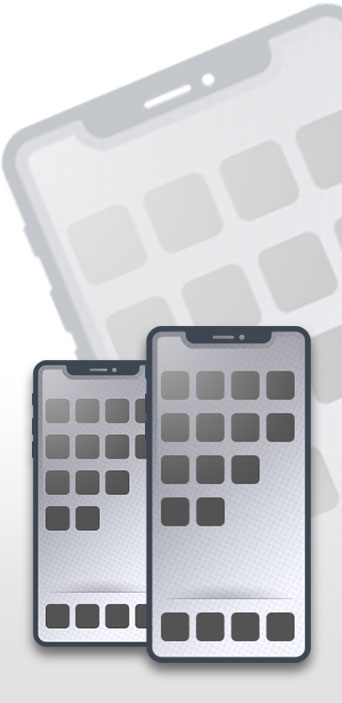Digital Image Processing
✴ Digital image processing is the use of computer algorithms to perform image processing on digital images






Digital Image Processing
✴ Digital image processing is the use of computer algorithms to perform image processing on digital images. As a subcategory or field of digital signal processing, digital image processing has many advantages over analog image processing. It allows a much wider range of algorithms to be applied to the input data and can avoid problems such as the build-up of noise and signal distortion during processing. Since images are defined over two dimensions (perhaps more) digital image processing may be modeled in the form of multidimensional systems.✴► This App gives you the knowledge of widely used methods and procedures for interpreting digital images for image enhancement and restoration and performing operations on images such as (blurring , zooming , sharpening , edge detection , e.t.c). It also focuses on the understanding of how the human vision works. How do human eye visualize so many things , and how do brain interpret those images? The App also covers some of the important concepts of signals and systems such as (Sampling , Quantization , Convolution , Frequency domain analysis e.t.c).✦ 【Topics Covered in this App are Listed Below】⇢ Digital Image Processing Introduction⇢ Signals and Systems Introduction⇢ History of Photography⇢ Concept of Dimensions⇢ Image Formation on Camera⇢ Camera Mechanism⇢ Concept of Pixel⇢ Perspective Transformation⇢ Concept of Bits Per Pixel⇢ Types of Images⇢ Color Codes Conversion⇢ Grayscale to RGB Conversion⇢ Concept of Sampling⇢ Pixel Resolution⇢ Concept of Zooming⇢ Zooming Methods⇢ Spatial Resolution⇢ Pixels, Dots and Lines Per Inch⇢ Gray Level Resolution⇢ Concept of Quantization⇢ ISO preference curves⇢ Concept of Dithering⇢ Histograms Introduction⇢ Brightness and Contrast⇢ Image Transformations⇢ Histogram Sliding⇢ Histogram stretching⇢ Introduction to Probability⇢ Histogram Equalization⇢ Gray Level Transformation⇢ Concept of Convolution⇢ Concept of Mask⇢ Concept of Blurring⇢ Concept of Edge Detection⇢ Prewitt Operator⇢ Sobel Operator⇢ Robinson Compass Mask⇢ Krisch Compass Mask⇢ Laplacian Operator⇢ Introduction to Frequency domain⇢ Fourier Series and Transform⇢ Convolution Theorem⇢ High Pass vs Low Pass Filters⇢ Introduction to Color Spaces⇢ Introduction to JPEG Compression⇢ Optical Character Recognition⇢ Computer Vision and Computer GraphicsImage Formation⇢ Inside the Camera – Sensitivity⇢ Digital image Fomation⇢ Sensitivity and Color⇢ Idealized Sampling⇢ Quantization to P levels⇢ (R,G,B) Parameterization of Full Color Images⇢ Images as Matrices⇢ Processing Simple – Transpose⇢ Simple Processing – Cropping⇢ Point Processing⇢ Calculating the Histogram of Point Processed Images⇢ Piecewise Linear, “Continuous” Point Functions⇢ More Range Stretching/Compression⇢ Dynamic Range, Visibility and Contrast Enhancement⇢ Brief Note on Image Segmentation⇢ Histogram EqualizationCalculating the Mean and Variance⇢ Discrete Amplitude Random Variables⇢ Histogram as a Probability Mass Function⇢ Histogram Equalization⇢ Histogram Matching – Specification⇢ Quantization⇢ Quantization Artifacts - False Contours⇢ Designing Good Quantizers⇢ Companding⇢ Quantization⇢ Designing the Reproduction Levels for Given Thresholds⇢ MSQE Optimal Lloyd-Max Quantizer⇢ Systems⇢ Linear Shift Invariant (LSI) Systems⇢ Convolution⇢ LSI Systems and Convolution⇢ The Fourier Transform of 2-D Sequences⇢ Real-Complex Parts and Symmetry⇢ Shifting and Modulation⇢ Delta Functions⇢ Fourier Transform Types⇢ Sampling and Aliasing⇢ Fourier Transform of Sampled Sequence⇢ Aliasing


